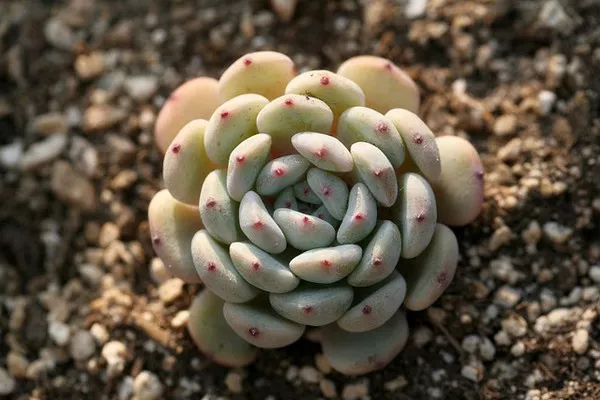Succulents have gained popularity in recent years as houseplants and outdoor ornamentals due to their unique appearance, low maintenance requirements, and ability to thrive in various environments. One of the key factors influencing the health and growth of succulents is sunlight. Understanding the sunlight requirements of your succulents is essential for their overall well-being. In this article, we will delve into the intricacies of how much sun your succulent needs to thrive.
Understanding Succulents
Succulents are a diverse group of plants characterized by their ability to store water in their leaves, stems, or roots. This adaptation allows them to survive in arid and semi-arid regions where water is scarce. Succulents come in various shapes, sizes, and colors, making them popular choices for both indoor and outdoor gardens.
The Role of Sunlight
Sunlight plays a crucial role in the growth and development of succulents. As desert plants, most succulents require ample sunlight to thrive. Sunlight provides the energy necessary for photosynthesis, the process by which plants convert light into energy to fuel their growth. Additionally, sunlight influences various physiological processes in succulents, including water uptake, nutrient absorption, and the production of pigments that give them their vibrant colors.
Factors Influencing Sunlight Requirements
While succulents generally require sunlight to thrive, the specific sunlight requirements can vary depending on several factors:
1. Species: Different species of succulents have varying tolerance to sunlight. Some species are adapted to intense sunlight and thrive in full sun conditions, while others prefer partial shade or filtered light.
2. Origin: The natural habitat of a succulent species influences its sunlight requirements. Succulents native to desert regions are typically adapted to high light levels, whereas those from shady forests may prefer indirect sunlight.
3. Season: Sunlight requirements may fluctuate depending on the season. Succulents may require more sunlight during the active growing season, such as spring and summer, and less sunlight during the dormant period in fall and winter.
4. Climate: The climate of your region can also impact the sunlight needs of your succulents. In cooler climates with less intense sunlight, succulents may require more exposure to sunlight to meet their energy needs.
5. Container vs. Ground: Succulents grown in containers may have different sunlight requirements than those planted directly in the ground. Containers can absorb and retain heat, potentially increasing the intensity of sunlight exposure for potted succulents.
Sunlight Requirements for Different Succulent Types
While there is no one-size-fits-all answer to how much sunlight a succulent needs, we can categorize succulents into three broad groups based on their sunlight requirements:
1. Full Sun Succulents: These succulents thrive in direct sunlight for most of the day. They typically require a minimum of 6 hours of sunlight per day to maintain their health and vibrant appearance. Examples of full sun succulents include Agave, Aloe, and Sedum.
2. Partial Sun Succulents: Succulents in this category prefer a balance of sunlight and shade. They typically thrive in 4-6 hours of sunlight per day, preferably during the morning or late afternoon when the sunlight is less intense. Examples of partial sun succulents include Echeveria, Haworthia, and Kalanchoe.
3. Shade-Loving Succulents: These succulents prefer indirect sunlight or dappled shade. They thrive in bright, indirect light or filtered sunlight and may struggle if exposed to direct sunlight for extended periods. Examples of shade-loving succulents include Gasteria, Sansevieria, and Schlumbergera.
Observing and Adjusting Sunlight Exposure
Determining the optimal sunlight exposure for your succulents often requires observation and adjustment. Here are some tips to help you gauge and adjust sunlight exposure for your succulents:
1. Monitor Sunlight Levels: Observe how much sunlight your succulents receive throughout the day. Note the duration and intensity of sunlight exposure in different locations.
2. Watch for Signs of Sunburn: Succulents that receive too much direct sunlight may develop sunburn, which appears as discolored or scorched patches on the leaves. If you notice signs of sunburn, consider moving the succulent to a location with less intense sunlight.
3. Rotate Succulents: Rotating your succulents periodically ensures that all sides receive equal sunlight exposure. This helps prevent uneven growth and ensures that the entire plant receives adequate light.
4. Provide Shade as Needed: If your succulents are receiving too much sunlight, provide shade using shade cloth, sheer curtains, or by moving them to a location with indirect sunlight.
5. Acclimate New Plants: When introducing new succulents to your garden or home, gradually acclimate them to sunlight to prevent sunburn. Start by placing them in a shaded area and gradually increase their exposure to sunlight over several weeks.
Conclusion
Sunlight is a vital component of succulent care, influencing their growth, health, and appearance. Understanding the sunlight requirements of your succulents is essential for ensuring their well-being and longevity. By considering factors such as species, origin, season, climate, and container versus ground planting, you can provide the optimal amount of sunlight for your succulents to thrive. Remember to observe your succulents regularly, adjust sunlight exposure as needed, and enjoy the beauty of these resilient plants in your home or garden.


